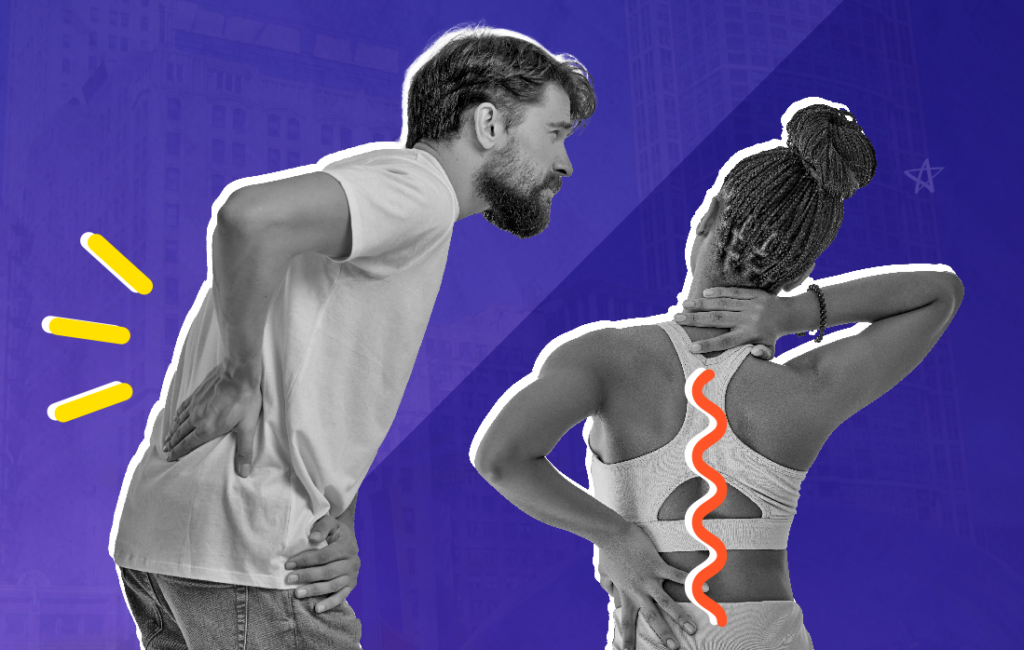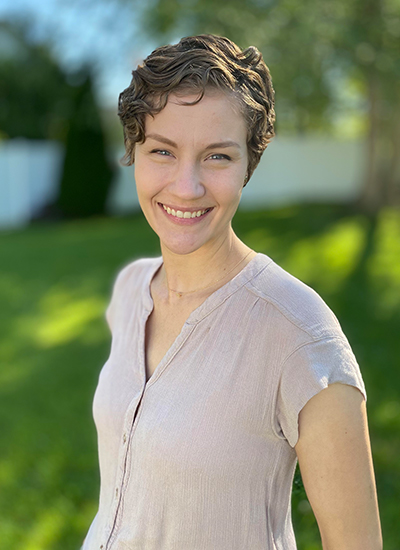
Everyone’s backbone has a slight curve, but when you have scoliosis, your spine curves sideways. (1) Across the globe, about 2 percent of all people have this condition, and about six million of those are Americans. (2)
If you have pain with this condition and notice you’re not getting the best rest, read on for tips about how to sleep with scoliosis, the connection between scoliosis and sleep apnea, and the best sleeping positions for scoliosis.
Note: The content on Sleepopolis is meant to be informative in nature, but it shouldn’t be taken as medical advice, and it shouldn’t take the place of medical advice and supervision from a trained professional. If you feel you may be suffering from any sleep disorder or medical condition, please see your healthcare provider immediately.
Long Story Short
- Scoliosis causes a sideways curve in your spine, which can cause back pain and difficulty sleeping.
- If you have scoliosis, you can improve your sleep with support pillows, a medium-firm mattress, and your favorite sleeping position.
- Everyone needs sleep, but for those with scoliosis, sleep can especially help with pain control and energy management for physical therapy exercises in the day.
What Is Scoliosis?
If you have scoliosis, your spine curves sideways in a shape that may resemble a C or an S. This spinal curve often causes no symptoms at all, but sometimes it can trigger back pain, which can make sleep elusive. (2) Most people get diagnosed with scoliosis between age 10 and 15, but you can get diagnosed at any age. (3)
If you have scoliosis as a child, aging can make symptoms worse, says Dr. Jason E. Lowenstein, M.D., director of scoliosis and spinal deformity at Morristown Medical Center. Some adults can also develop scoliosis from wear and tear on the space between your vertebrae (spine bones), especially in the lumbar region, which can cause low back pain. (4) Now, let’s talk about how this might affect your sleep.
How Scoliosis Affects Sleep
Sensitive nerves travel through your spine, where they branch out into all areas of your body. If your backbone bends out of shape, like with scoliosis, some nerves can get pinched and cause pain. (2)
Often, lying down improves the pain, says Lowenstein, but over time symptoms can worsen, and reclining may not help like it used to.
Spinal Asymmetry and Sleep
If you could see your spine when you looked in a mirror, it would look straight — each side would be symmetrical. When you have scoliosis, though, your spine curves to the side, and your backbone would look asymmetrical in the mirror. “[Spinal] asymmetry can affect a person’s ability to find a comfortable position when trying to fall asleep,” says Lowenstein.
Spine pain, common in those with scoliosis, may also wake you up after you fall asleep. “If a person tries to change positions at night while sleeping, moving into a position that puts stress on a scoliotic spine can result in nighttime waking and decrease the ability to get interruption-free sleep at night,” Lowenstein says.
Scoliosis and Sleep Disorders
Scoliosis can also create a higher risk of developing sleep disorders, says Lowenstein, although recent research on this topic is rare. However, one older study found that nighttime leg cramps were more common in people with lumber (low back) spinal stenosis, which are a symptom of sleep disorders like restless leg syndrome and periodic limb movements of sleep (PMLS). (5) (6)
Sleep apnea, another common sleep disorder, may also be connected to this condition. While scoliosis and sleep apnea haven’t been well-studied in adults, there is some research that has focused on children and adolescents. One such study on 57 teenagers found that those with scoliosis had more apnea events while they slept than those without the condition, a result confirmed by another small study on 91 children and adolescents. (7) (8)
Tips for Sleeping with Scoliosis
Now that we know how this spinal curve can affect your body, we can give you tips on how to sleep with scoliosis.
Sleep Position for Scoliosis
You can experiment to find your best scoliosis sleep position for a good night’s rest. “Finding a comfortable and stable position at night to sleep in greatly improves the likelihood of having a successful night of sleep,” says Lowenstein, who recommends trying to lie on your side or on your stomach to correct your spinal curve. Although research in this area is scarce, these positions may relieve sciatica and nerve pinching.
Use Pillows a-Plenty
If your nerves start pinching when you lie down, you can prop yourself up with pillows under your neck and shoulder, says Lowenstein. These can help keep your spine more straight and stable, which may lower your pain levels and improve your sleep. Remember: the goal is to straighten out that curve for best results.
Choose One of the Best Mattresses for Scoliosis
When you’re looking for the best mattress for scoliosis, a firmer option can give you better stability, but be careful not to go too firm, says Lowenstein. Extra-stiff mattresses can be uncomfortable and make your back pain worse, but so can too-soft mattresses. (9) You can choose from a large variety of medium-firm mattresses and try a few out to find your perfect fit.
Should You Wear a Brace?
Back braces are recommended for children whose backs are still growing and developing, but are not typically used by adults, says Lowenstein. (10) In adults, braces can be so uncomfortable that they disrupt sleep themselves, and can even cause skin breakdown. When in doubt, though, ask your healthcare provider what they think.
Best Sleeping Positions for Scoliosis
No one sleeping position can offer the perfect slumber for everyone with scoliosis, but you can try out a few to find your best fit. “Each scoliosis curve can have its own ‘personality’, and different people with similar curves might find different positions more comfortable or successful and provide a quality good night’s sleep,” says Lowenstein.
Even so, some people find they stay most comfortable when they lie down on the same side as their spine curve, says Lowenstein. For example, if your spine curves to the left, your left side may be most comfortable. Others find they get their best sleep on their back or stomach. You can try each position out the next few nights to see which works best for you.
The Importance of Quality Sleep for People with Scoliosis
When you sleep, your body has a chance to rest and heal itself. (11) “Poor sleep can…contribute to worsening back pain and sciatica symptoms, creating a vicious cycle of poor sleep and worsening symptoms,” says Lowenstein.
If you get sleep-deprived, you’ll also have less energy during the day to do strengthening exercises, says Lowenstein, which can weaken your core and make your back pain worse. Good health starts with good sleep!
Managing Scoliosis Pain
In addition to strength exercises with physical therapy, your provider may treat your scoliosis pain and neurological symptoms through a combination of: (2) (10)
- Pain-relieving medications
- Chiropractic treatment
- Epidural or nerve block injection
- Acupuncture
- Massage
- Posture training
- Yoga exercises
Early diagnosis can help you manage your scoliosis pain best, so if you feel back pain, let your provider know soon. Treating scoliosis early can improve your symptoms and offer better sleep, says Lowenstein.
FAQs
Should I wear a scoliosis brace to bed?
Back braces are recommended for children whose backs are still growing and developing, but are not typically used by adults, says Lowenstein. (10) In adults, braces can be so uncomfortable, they disrupt sleep themselves.
What is scoliosis?
Scoliosis causes your spine to curve sideways. It often causes no symptoms at all, but sometimes it can cause back pain, which can disrupt your sleep. (1)
The Last Word From Sleepopolis
You don’t have to let a spine curve steal your sleep. If scoliosis gives you back pain and symptoms from compressed nerves, you can fight back with help from your provider. Between therapies, bedding adjustments, and medications, you can take back your nightly rest.
Sources
- Scoliosis – Symptoms and causes – Mayo Clinic. Accessed July 19, 2024. https://www.mayoclinic.org/diseases-conditions/scoliosis/symptoms-causes/syc-20350716
- Scoliosis: What It Is, Types, Causes, Symptoms & Treatment & Types. Accessed July 19, 2024. https://my.clevelandclinic.org/health/diseases/15837-scoliosis
- Scoliosis – NHS. Accessed July 19, 2024. https://www.nhs.uk/conditions/scoliosis/
- Degenerative Scoliosis Diagnosis & Treatment – NYC | Columbia Neurosurgery in New York City. Accessed July 19, 2024. https://www.neurosurgery.columbia.edu/patient-care/conditions/degenerative-scoliosis#
- Kim HJ, Hong SJ, Park JH, Ki H. Sleep Disturbance and Its Clinical Implication in Patients with Adult Spinal Deformity: Comparison with Lumbar Spinal Stenosis. Pain Res Manag. 2020;2020:6294151. doi:10.1155/2020/6294151
- Restless Legs Syndrome | National Institute of Neurological Disorders and Stroke. Accessed September 16, 2023. https://www.ninds.nih.gov/health-information/disorders/restless-legs-syndrome
- Li X, Guo H, Chen C, et al. Does Scoliosis Affect Sleep Breathing? World Neurosurg. 2018;118:e946-e950. doi:10.1016/j.wneu.2018.07.106
- Yakut Y, Pelin Z, Yagci G. An investigation of sleep profiles in individuals with idiopathic scoliosis. Sleep Sci. 2022;15(2):172-178. doi:10.5935/1984-0063.20220038
- Caggiari G, Talesa GR, Toro G, Jannelli E, Monteleone G, Puddu L. What type of mattress should be chosen to avoid back pain and improve sleep quality? Review of the literature. J Orthop Traumatol. 2021;22:51. doi:10.1186/s10195-021-00616-5
- How to Manage Adult Scoliosis | Mass General Brigham. Accessed July 19, 2024. https://www.massgeneralbrigham.org/en/about/newsroom/articles/how-to-manage-adult-scoliosis
- Sleep: What It Is, Why It’s Important, Stages, REM & NREM. Accessed July 19, 2024. https://my.clevelandclinic.org/health/body/12148-sleep-basics
Lowenstein, Jason, MD. Personal Interview. July 10th, 2019.



























